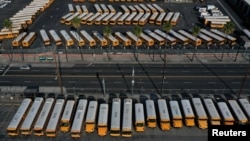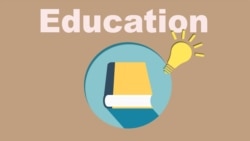Public schools in many parts of America have been closed to in-person classes during the COVID-19 crisis. Now, there is evidence that the closures are having an effect on the mental health of students.
The Reuters news agency questioned school officials around the country last month to examine the mental health effects of full or partial school shutdowns.
The schools were in large and small districts. They serve more than 2.2 million students across the United States.
Of the districts that answered the questions, 74 percent reported several signs of increased mental health issues among students. More than half of them reported increases in mental health referrals and counseling. Counseling is advice and support that is given to people to help them deal with problems.
Mental health issues were not only a concern for students. Fifty-seven percent of districts reported an increase in teachers and support employees seeking assistance.
School closures have affected districts in every state.
In the spring of 2020, all U.S. public schools from kindergarten to 12th grade closed, at least temporarily. The goal was to help slow the spread of the new coronavirus.
Burbio is an internet service that follows school openings. Its website said that, in February, 57 percent of students attended public schools that were completely or partially closed.
Some school leaders, teachers’ labor groups and parents still support full or partial school closures. They say the closures protect the health of children or prevent community spread. Yet research over the last year has shown that public schools following social distancing guidelines usually experience low rates of coronavirus spread.
Recently, the Centers for Disease Control and Prevention (CDC) reported on conditions in schools. The CDC noted that “the majority of cases that are acquired in the community and are brought into a school setting result in limited spread inside schools” if preventive measures are in place.
Deadly COVID-19 cases among children make up less than one tenth of one percent of all deaths, the CDC said. Of the 36,860 overall child deaths in the past year, 216 involved COVID-19.
Supervision needed
At the beginning of the coronavirus crisis, school closings received little resistance. Many parents believed the shutdowns would last a few weeks. But closures continued for months and began to affect many students. Without regular supervision from schools or parents, some students are on their own.
Jayme Banks of the Philadelphia Public School District has received a police report almost every week about students since classes went online last year. They include involvement in shootings, car accidents and arrests. Deadly youth shootings in the city rose from 55 in 2019 to 87 in 2020, and non-deadly shootings increased 72 percent over a four-year average of earlier years. That information comes from the Philadelphia Office of the Comptroller.
Some educators believe fewer incidents would happen were the students in schools.
One year after school shutdowns began, some parents are becoming increasingly concerned about online classes. Siva Raj is a single father of two boys in San Francisco, California. He is co-leading a campaign to get new leadership for the school district. His older 14-year-old son has lost all desire to learn, he said. He often just goes between his bed and computer.
Raj said about his son, “I feel like I am failing him.”
In cases where children return to the classroom, some parents say they see a change. As her children struggled with remote learning, Kate Sullivan Morgan and her husband looked at their finances. They saw there was no way they could pay for private schools, which offered in-person teaching, for their two children.
In the fall, they decided to sell their house in San Francisco and move to Austin, Texas, where their sons could go to public school. Since January, both sons have been back in school five days a week.
“They are back to their old selves,” the mother said.
I’m John Russell.
Benjamin Lesser, M. B. Pell and Kristina Cooke reported on this story for Reuters. John Russell adapted if for Learning English. Mario Ritter, Jr. was the editor.
_____________________________________________________________
Words in This Story
district – n. an area or region containing the schools that a school board is in charge of
referral – n. the act of sending someone to another person or place for treatment, help, advice, etc.
acquire – v. to get (something) : to come to own (something)
self – n. the person that someone normally or truly is — used to describe the way someone acts or feels










